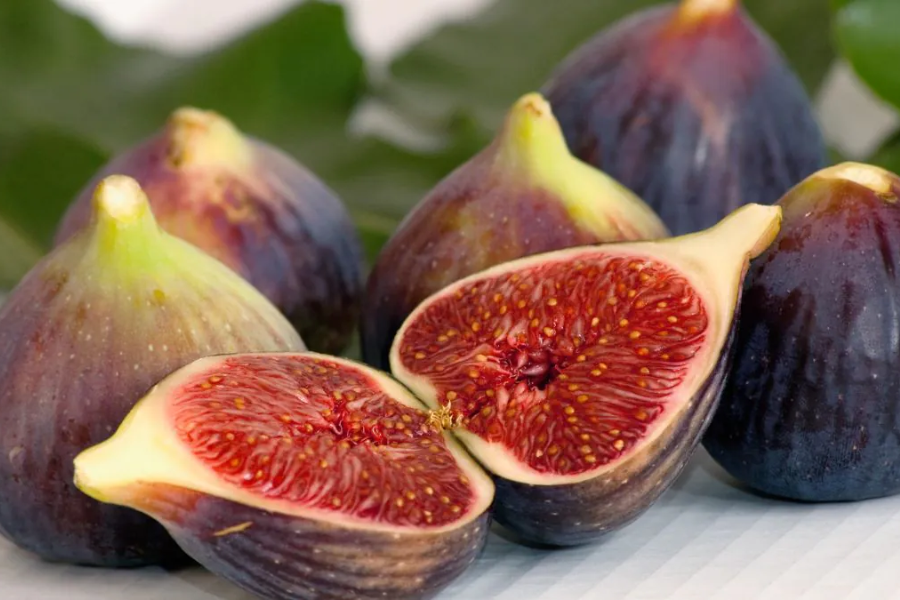Friday Fig: Unveiling the Secrets of this Exquisite Fruit
The Friday Fig, scientifically known as Ficus carica, is a fruit that has captivated the culinary world and ancient cultures alike. Known for its unique flavor and high sugar content, this delectable fruit has found its way into countless recipes and traditions throughout history. In this article, we explore the Friday Fig from its historical roots to its modern culinary uses, highlighting its nutritional benefits, cultural significance, and practical tips for growing and using this remarkable fruit.
The History and Origin of the Friday Fig
The Friday Fig has a rich history that traces back to the Middle East, where it is believed to have been cultivated for thousands of years. Its historical significance is profound, as it appears in numerous ancient texts and religious writings. In various cultures, figs were revered not only for their taste but also for their symbolic meanings. In ancient Egypt and Greece, figs were associated with fertility and abundance, often appearing in religious ceremonies and mythological stories.
The fruit’s journey from the ancient world to contemporary times is a testament to its enduring appeal. Figs were introduced to the Mediterranean region and beyond through trade and exploration, cementing their place in global cuisine. Their historical significance extends to their role in the Bible and other sacred texts, where they are often mentioned as symbols of prosperity and divine favor.
Varieties of Friday Figs
The world of Friday Figs is diverse, with several notable varieties each offering distinct flavors, textures, and appearances. Among the most popular are:
- Black Mission: Known for its deep purple skin and rich, sweet flavor, the Black Mission fig is a favorite for both fresh eating and culinary applications.
- Brown Turkey: With its brownish skin and mild, sweet taste, the Brown Turkey fig is commonly used in jams and baked goods.
- Kadota: This variety features a light green skin and a honey-like sweetness, making it ideal for both savory and sweet dishes.
- Calimyrna: Recognized for its large size and nutty flavor, the Calimyrna fig is often enjoyed dried or fresh.
Each variety of Friday Fig brings something unique to the table, allowing for a range of culinary possibilities and personal preferences.
Nutritional Benefits of Friday Figs
Despite their modest sweetness, Friday Figs pack a nutritional punch. They are an excellent source of essential vitamins and minerals, including:
- Vitamins: Figs are rich in vitamin A, B vitamins, and vitamin K, all of which contribute to overall health and well-being.
- Minerals: High in potassium, magnesium, and calcium, figs support heart health, bone strength, and muscle function.
- Fiber: Figs are an exceptional source of dietary fiber, which aids in digestion, helps maintain a healthy weight, and regulates blood sugar levels.
The health benefits of figs extend beyond their nutritional content. They have been traditionally used to support digestive health, alleviate constipation, and promote heart health, thanks to their high fiber and antioxidant content.
Culinary Uses and Recipes
Friday Figs are incredibly versatile in the kitchen, offering a range of culinary possibilities:
- Salads: Fresh figs add a touch of sweetness and texture to salads. Try pairing them with goat cheese, arugula, and a balsamic vinaigrette for a delightful appetizer.
- Desserts: Figs are a natural fit for desserts, whether used in tarts, cakes, or simple fig preserves. Their sweetness complements both baked goods and fresh fruit salads.
- Jams and Chutneys: Figs are excellent for making jams and chutneys, which can be used to enhance cheese plates or as a spread for toast.
- Savory Dishes: Incorporate figs into savory dishes like roasted meats or pasta. Their natural sweetness pairs well with rich flavors and adds complexity to savory recipes.
A simple yet elegant recipe to try is fig and prosciutto flatbread. Spread a thin layer of fig preserves on a flatbread, top with prosciutto, fresh arugula, and a drizzle of balsamic glaze. Bake until crispy and enjoy a sophisticated appetizer or light meal.
Growing and Harvesting Friday Figs
For those interested in cultivating their own Friday Figs, here are some essential tips for growing and harvesting:
- Climate: Figs thrive in warm, temperate climates with plenty of sunlight. They are suitable for USDA hardiness zones 7-11.
- Soil: Plant figs in well-drained soil with good fertility. Adding compost or organic matter can enhance soil quality and support healthy growth.
- Watering: Figs need regular watering, especially during dry periods. However, avoid overwatering, which can lead to root rot.
- Pruning: Prune fig trees annually to maintain their shape, remove dead or diseased branches, and improve air circulation.
- Harvesting: Figs are typically ready to harvest when they are fully ripe, soft to the touch, and easily detached from the tree. Harvest figs gently to avoid bruising.
Health Benefits and Medicinal Uses
Historically, figs have been valued for their medicinal properties. They are known to:
- Improve Digestive Health: The high fiber content in figs helps regulate bowel movements and prevent constipation.
- Support Heart Health: Figs contain antioxidants and potassium, which contribute to cardiovascular health by reducing blood pressure and cholesterol levels.
- Aid in Weight Management: The fiber in figs promotes satiety, helping to control appetite and support weight management.
In addition to these benefits, figs have been used in traditional medicine to treat a variety of ailments, including respiratory issues and skin conditions.
Friday Figs in Culture and Traditions
The cultural significance of Friday Figs spans across various civilizations and traditions. In ancient Greece and Rome, figs were associated with the goddess Demeter and other deities related to fertility and agriculture. In some cultures, figs are considered a symbol of abundance and prosperity, often featured in religious festivals and rituals.
In modern times, figs continue to hold cultural importance in many communities. They are celebrated in festivals around the world, showcasing their role in local traditions and culinary practices.
How to Choose and Store Friday Figs
To enjoy the best flavor and freshness, selecting and storing Friday Figs correctly is crucial:
- Choosing: Look for figs that are plump, slightly soft, and free from blemishes. They should have a sweet aroma and a vibrant color. Avoid figs that are overly hard or mushy.
- Storing: Fresh figs are perishable and should be stored in the refrigerator. They can last for up to a week when kept in a breathable container. For longer storage, figs can be dried or preserved.
Dried figs are a great option for extending the fruit’s shelf life. They retain most of their nutritional value and can be used in a variety of recipes or enjoyed as a snack.
Fun Facts about Friday Figs
Here are some intriguing facts about Friday Figs:
- Historical Symbolism: Figs were one of the first fruits cultivated by humans and have been found in ancient ruins, including those of Pompeii.
- Nutritional Powerhouse: Figs have been used in traditional medicine for centuries and were even mentioned by Hippocrates, the father of medicine.
- Cultural Impact: Figs play a role in many cultural rituals and festivals, from ancient Roman celebrations to modern-day fig festivals.
Friday Fig Festivals Around the World
Friday Fig festivals are celebrated globally, reflecting the fruit’s cultural significance:
- California Fig Festival: Held annually in California, this festival showcases the state’s rich fig-growing heritage with events, food, and entertainment.
- Fig Fest in Turkey: Turkey, a major fig producer, hosts festivals that celebrate the harvest with traditional music, dance, and fig-based dishes.
- The Fig Festival in Greece: In Greece, fig festivals often feature traditional Greek music, dance, and a variety of fig-based delicacies.
These festivals not only highlight the importance of figs in local cultures but also offer a platform for community celebration and education.
Sustainability and Friday Fig Farming
As demand for Friday Figs grows, sustainable farming practices become increasingly important. Key considerations for sustainable fig farming include:
- Water Usage: Efficient irrigation practices help conserve water and support healthy fig production.
- Soil Management: Implementing organic farming techniques and reducing chemical inputs can improve soil health and reduce environmental impact.
- Pest Control: Integrated pest management (IPM) strategies can minimize the use of harmful pesticides and promote natural pest control methods.
Sustainable fig farming practices ensure that this beloved fruit can be enjoyed by future generations while minimizing environmental impact.
Friday Figs: A Versatile Ingredient in Modern Cuisine
In contemporary kitchens, Friday Figs are celebrated for their versatility. Chefs and home cooks alike are discovering innovative ways to incorporate figs into their dishes:
- Gourmet Cuisine: Figs are featured in upscale restaurants as part of gourmet dishes, including fig-studded sauces, artisanal cheeses, and sophisticated desserts.
- Home Cooking: In home kitchens, figs can enhance everyday recipes, from breakfast smoothies to savory mains, demonstrating their adaptability and appeal.
The continued exploration of fig-based recipes highlights the fruit’s potential in modern cuisine and its ability to inspire culinary creativity.
Potential Drawbacks and Allergies
While Friday Figs offer numerous benefits, they may not be suitable for everyone. Some individuals may experience allergic reactions or sensitivities to figs. Symptoms can include:
- Digestive Issues: Overconsumption of figs may lead to digestive discomfort due to their high fiber content.
- Allergic Reactions: Rarely, individuals may experience allergic reactions, including itching or swelling.
It’s essential to consult with a healthcare provider if you have concerns about potential allergies or sensitivities.
Conclusion: Embracing the Friday Fig
Friday Figs are more than just a delightful fruit; they represent a rich history, offer exceptional nutritional benefits, and hold cultural significance in various traditions. By incorporating Friday Figs into our meals, we not only enjoy their delicious flavor but also connect with a centuries-old tradition. Whether you are growing your own fig tree, experimenting with fig recipes, or simply enjoying a fresh fig, this fruit is a testament to the enduring appeal of nature’s bounty.







